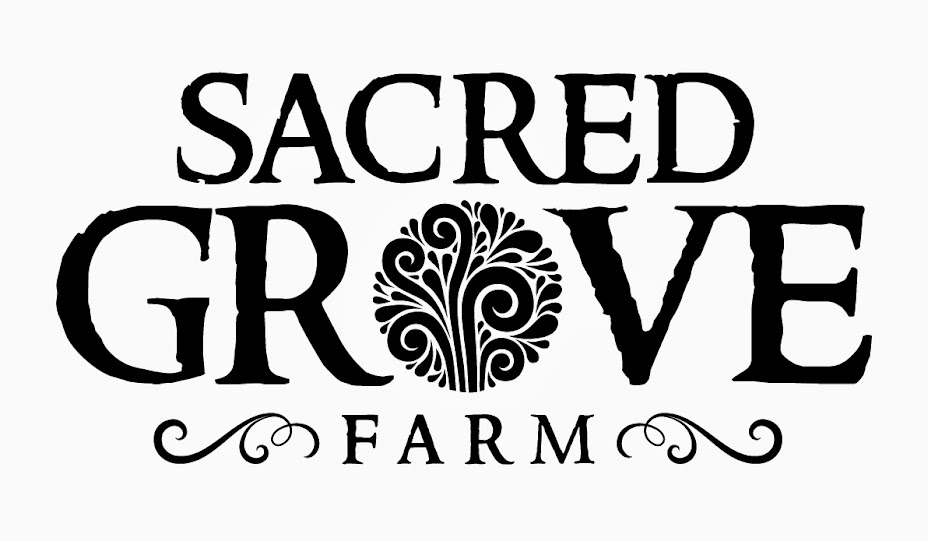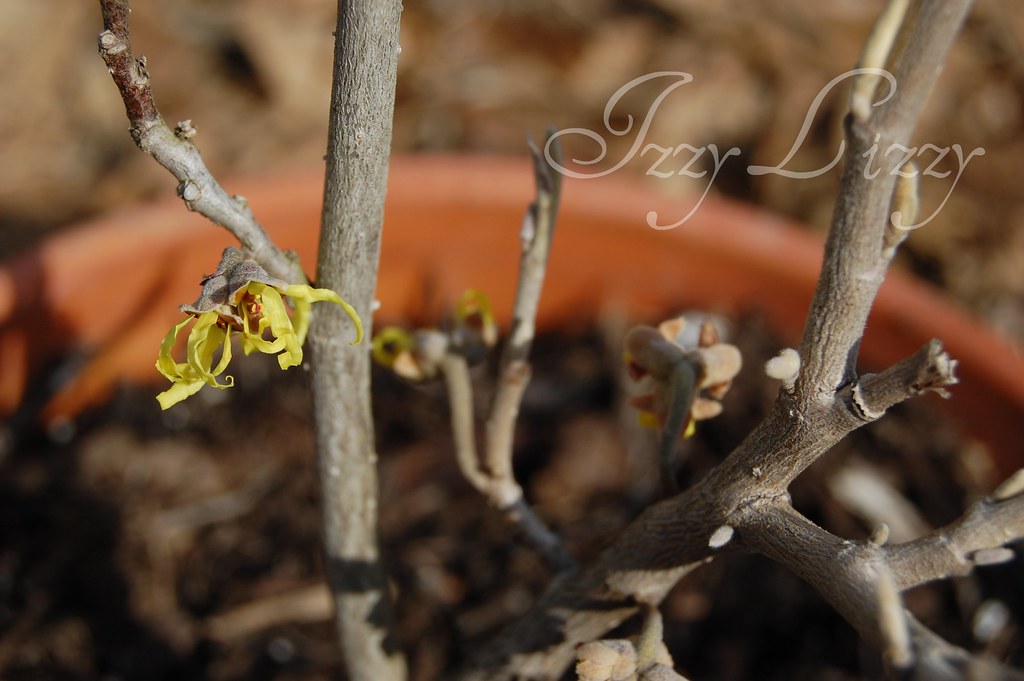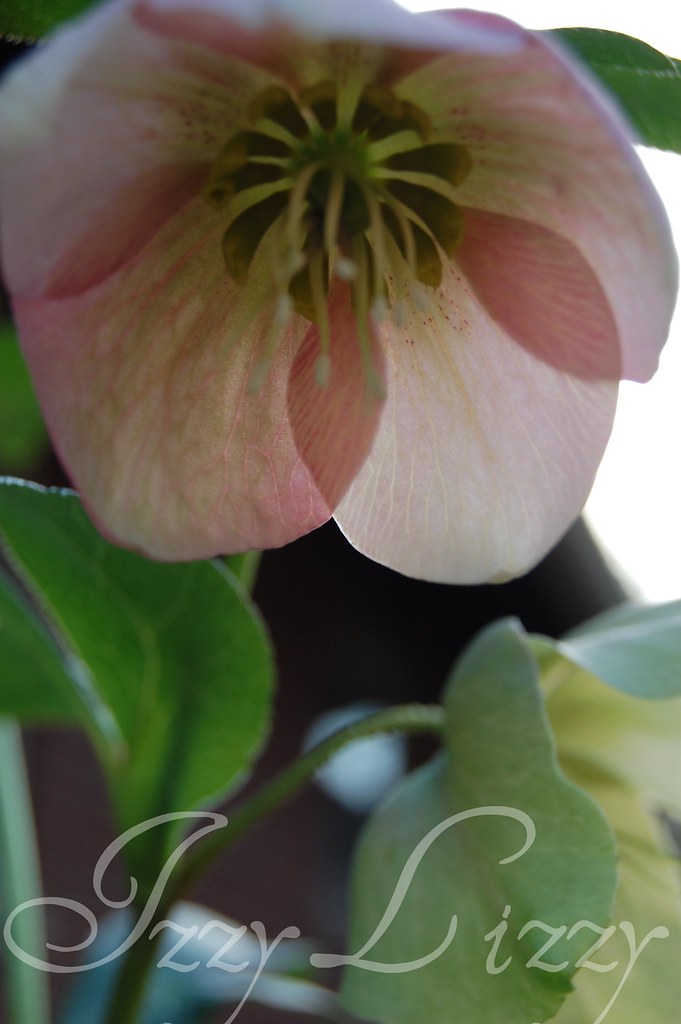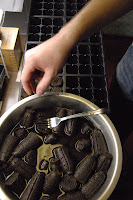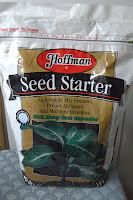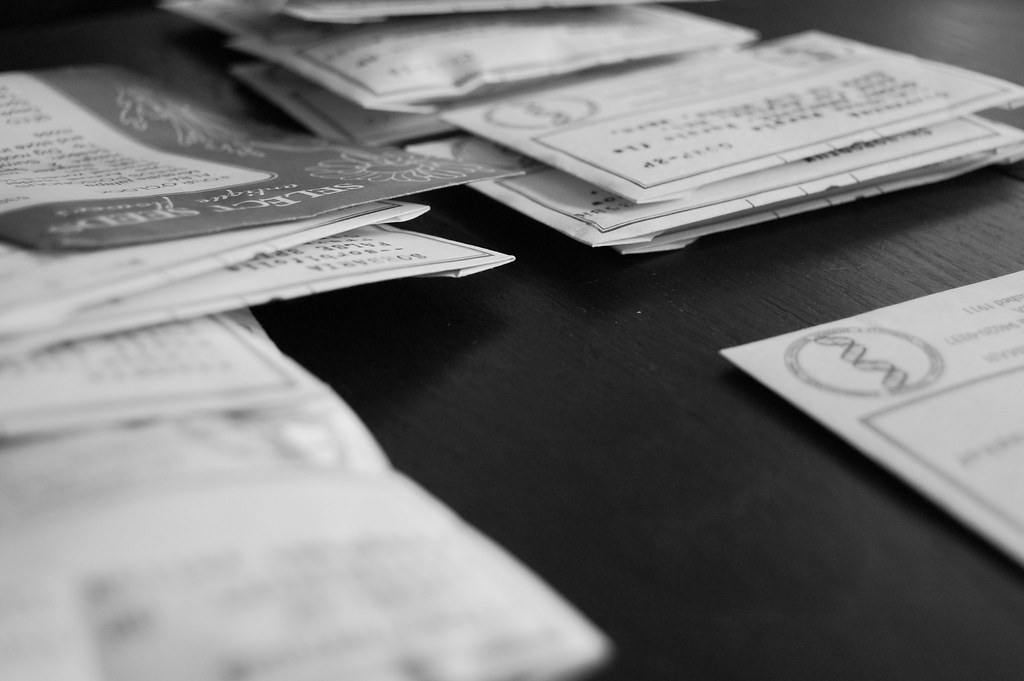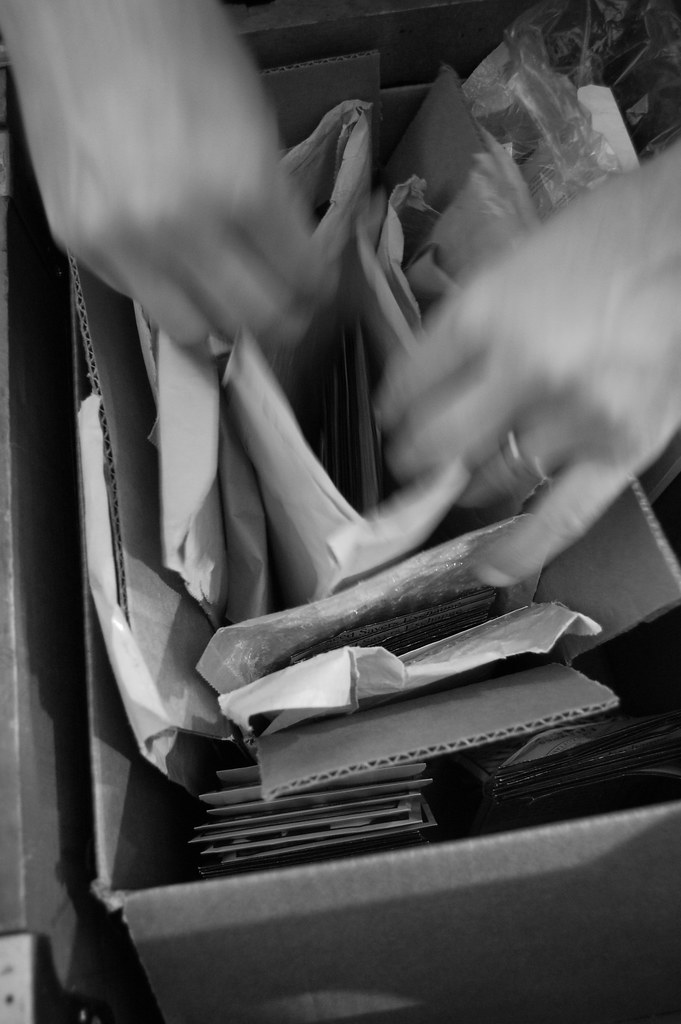Here are some photos of our "babies"!
Left photo is all the vegetables: tomatoes, eggplants, broccoli etc. Right photo lots of herbs including thyme...
I also started a few little containers of lettuce, radishes, beets and spinach.
We bought a wine box from Jungle Jim's for about $5.00-in it are the beet, spinach and radish seeds. The trough container has two varieties of lettuce: Rouge d'Hiver, Forellenschuss. I think we are going to get a few more wine boxes for either vegetables or flowers. I put chicken wire over the containers to keep out the digging critters.
Both containers have potting soil, compost and a little bit of organic fertilizer. (I'm using the term organic loosely here)
I want to touch a little on fertilizer as there are many commercial varieties on the market. We don't use much or very many types-we are trying to use compost, cover crops and crop rotation to nourish the soil but some benefit can come from using a fertilizer.
Here is some advice from Start with the Soil by Grace Gershuny. These are only general examples and there may be some exceptions. We are not experts so I urge everyone to do a little reading on their own to get more information.
- Look at the guaranteed analysis (NPK analysis) Nitrogen, Phosphorus, Potassium. It will tell you the percentage of soluble elements available in the fertilizer
- Choose an NPK rating no higher than 10 for any element.
- Anything higher than 10 are probably standard chemical fertilizers that use: urea, monoammonium phosphate, muriate of potash
- Some bags of fertilizer will not have ingredients so understanding the NPK analysis is helpful
In addition to getting the vegetables ready, we've had some blooming flowers emerge!
Purple Crocus and Yellow Daffodils are some classics. Here the crocus are nestled next to our lemon thyme.
Blooming Witch Hazel
We bought a blooming hellebore plant last week. We need to get it in another container but I wanted to get some photos before it stopped blooming. So pretty!
We are going to start constructing some raised beds very soon, so I will be updating that as we progress. I'm so glad spring it here!
